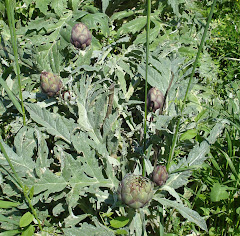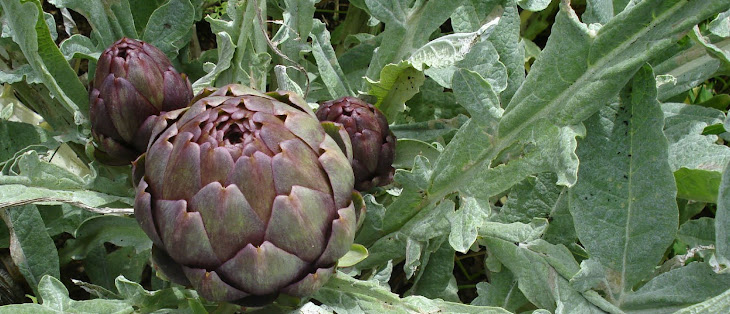I seem to have become a ‘weekend blogger’ – I don’t usually leave a gap of nearly a week between posts, but I have couple of excuses: first, I’ve been unable to connect to the internet for more than 15 minutes at a time since last Sunday night, something which has been resolved today by the installation of a new ‘Livebox’. And secondly, I’ve been away, staying for a couple of days in Banyuls-sur-Mer in the French part of Catalunya.
Banyuls is famous for its vin doux, a naturally sweet wine produced thanks to the amount of strong sunshine in that area. Squeezed between the Pyrenees and the rocky Côte Vermeille coast, the vines are grown in terraces anywhere on the slopes where there is space to make it worthwhile working the ground.
 The vines were only just beginning to sprout this season’s bright green leaves, but these pictures show how close to the sea and the mountains the vineyards are. |  |
The terraces are walled with local stone, with drainage channels leading down between them, and are sometimes wide enough for only two rows of vines.
 |  |
 |  |
The three variations of Banyuls – red, white and ambré (with added caramelised sugar to give a golden colour) – are all delicious apéritifs and can also be used in cooking. The chef at the restaurant at the Hotel des Elmes where we stayed was expert at this – two of the wonderful dishes we tasted were scallops and Catalan blood sausage with a reduction of Banyuls, and escalope of foie gras with a chocolate and Banyuls sauce. There’s more information about Banyuls on this website.
On the way home we stopped near Millas at the Moulin du Mas St Pierre where Monique and Joseph Planes decided some years ago to change their fruit farm into an olive farm. They now have 30,000 olive trees all of the Arbequine (Arbequina as it’s called in Spain) variety grown closely in rows, rather like the fruit trees in neighbouring farms. These Arbequine olives, grown mostly in Catalunya and Spain, are very small and Monsieur Planes told us that this gives them one great advantage over other varieties: the olive fly does not attack them because there isn’t enough flesh around the stone for it to burrow into the olive. This means that they have been able achieve organic status for all their production as they don’t need to use chemicals on the trees. There is a very modern mill at the farm and huge tanks where the oil is stored at a constant temperature of 18 degrees C to preserve the flavour of the oil. As always when we visit the premises of a producer of good food or wine, it was a delight to talk to someone as impassioned about his products as Monsieur Planes and, of course, to buy some of his wonderful oil to bring home. His passion and hard work have been rewarded, too, with a gold medal this year at the Concours Général Agricole in Paris. Madame Planes travels around the world – as far as Shanghai recently – to food fairs, so that now their oil is sold in many countries and even, M. Planes told us proudly, in Harrods in London.
 |  |








3 comments:
If this is vineyard on the photos, why grape have no support? different growing method? I am very interested in growing grapes, so anything about it awakes my curiosity :)
Ewa:The grape used here is Grenache which is a bush variety, small and hardy, and does not need supports as other vines do. I was surprised to see how short the vines were - much smaller than Grenache vines where I live in the Hérault, but I suppose they are very exposed to winds from the sea in the Banyuls area.
The Arbequina olives are the one most often grown here. I think the best rate of grant is paid for it and so a lot of almond trees are being replaced by them. It is usual here for the grapes to be self-supporting too.
Post a Comment